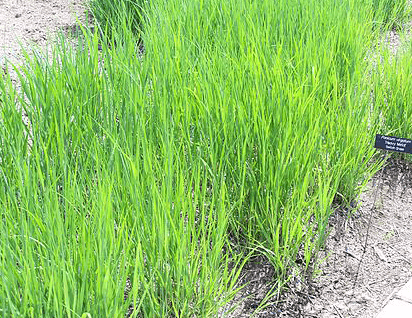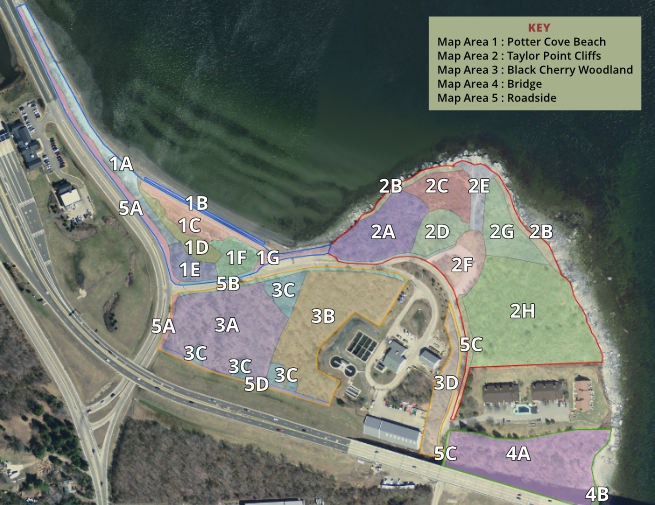Common Name: Switchgrass
or switch panicgrass
Specific Name: Panicum virgatum
Known Occurrence at Taylor Point:
Roadside (Area 5)
Map Areas: 5A
Category: Native, Grass

Ecological Considerations:
Panicum virgatum or switch panicgrass is a hardy, adaptable, deep-rooted, perennial grass that prefers full sun, but will tolerate partial shade. It grows between 3 to 7 feet high and does well in both dry or moist conditions. Its flowers have a well-developed panicle, often growing up to 25 inches long, and it bears an abundance of seeds. When ripe, the seeds may appear pink or dull-purple. They typically turn golden brown with the foliage of the plant in the fall.
Switchgrass has a deep fibrous root system which can extend nearly as deep as the plant is tall.
Switchgrass favors open woods and dunes and shorelines as well as brackish marshes. It typically grows in clumps, propagates by seed and also can spread through its rhizomes. In favorable conditions, plants may self-seed. Switchgrass often grows along other native grasses such as Little Bluestem ( Schizaxhyrium scoparium ). Once well established, a switchgrass stand can persist for ten years or longer.
Propagation Mechanisms/Strategies for Encouraging its Establishment:
Switchgrass is easily grown from seed. Seeds can be collected in the autumn and sewn in spring. They require no pretreatment. Additionally switchgrass clumps may be sliced with a sharp knife and the portions transplanted.
Best Planting Practices/Options and Pros and Cons of Options:
Factors that may increase the likelihood of success for establishing switchgrass include planting switchgrass after the soil is well warmed during the spring; planting seed 1/4 – 3/4 inches deep; packing the soil both before and after seeding; and providing no fertilization at planting to minimize competition.
Key Issues Regarding its Ecology ( e.g. Which Invasives Threaten it, What Conditions Favor it)
Associated Ecological Benefits:
Switchgrass is useful for erosion control from flooding and runoff. It is useful for soil conservation efforts and it provides habitat and cover for small animals and birds.
Availability of Locally Sourced Seeds and Plants:
The Farmer’s Daughter: www.thefarmersdaughterri.com
Wildwood Nurseries: www.wildwoodri.com
Rhody Native: www.rhodynative.org
Case Studies of Native Plant Establishment Efforts/Lessons Learned
Additional Photos:
Sources Cited:
Key Words:
Native Grasses/Sedges/Rushes;
Switchgrass
Panicum virgatum
